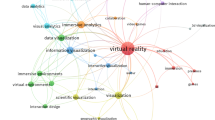Abstract
Multiple upcoming 5G use-cases seem to particularly depend on network deployment and role model questions. Service reliability, liability and ultimately adequate licensing of spectrum are likely to be the primary success factors, independent of features to be implemented in 5G new radio. Here, this article discusses standardization enabling different audio-visual production use-cases and flexible models within the 5G system.
Zusammenfassung
Vielerorts bedingen neue 5G Use-Cases Verfügbarkeit von garantierten Diensten im lizensiertem Spektrum. Aspekte wie Netzbetrieb und Business-Arrangements beeinflussen wesentlich den Erfolg von zukünftigen, industriellen Funksystemen. Dieser Beitrag nimmt sich der professionellen audio-visuellen Medienproduktionen an, diskutiert Standardisierungsaspekte rund um flexible Modelle, die eine entsprechende Anwendung innerhalb 5G möglich machen – die Umsetzung einer geeigneten Funkschnittstelle wird hierbei vorausgesetzt.






Similar content being viewed by others
References
(2017, December). PMSE-XG Research Project, White Paper: PMSE and 5G. http://pmse-xg.research-project.de/publications.html (2017, December 1).
Pilz, J., Holfeld, B., Schmidt, A., Septinus, K. (2018): Professional live audio production: a highly synchronized use case for 5G URLLC systems. IEEE Netw., 32, 85–91.
3GPP TS 24.116 V14.0.0; 3rd generation partnership project; Technical specification group core network and terminals; Stage 3 aspects of system architecture enhancements for TV services. (Release 14) 2017.
3GPP TR 22.825 V0.0.1, 3rd generation partnership project; Technical specification group services and system aspects; Feasibility study on audio-visual service production (Release 17) (2018, August).
3GPP TR 22.804 V2.0.0; 3rd generation partnership project; Technical specification group services and system aspects; Study on communication for automation in vertical domains (Release 16) (2018, May).
http://lips-project.de/ (2018, July 6).
MusiConnect Ericsson, https://www.facebook.com/ericsson/videos/connecting-musicians-over-geographical-distances/1800063376717075/. Online (2018, July)
Dohler, M. First 5G Concert London/Berlin, https://www.youtube.com/watch?v=mB_w-ml-dZY. Online (2018, July 2).
Bundesnetzagentur, Strategic aspects of the availability of spectrum for broadband rollout in Germany. https://www.bundesnetzagentur.de/SharedDocs/Downloads/EN/Areas/Telecommunications/Companies/TelecomRegulation/FrequencyManagement/ElectronicCommunicationsServices/DemandIdentificationProceedings/StrategicAspects.pdf?__blob=publicationFile&v=1 Online (2018, June 20).
RSPG15-595 Final. RSPG opinion on a long-term strategy on the future use of the UHF band (470–790 MHz) in the European Union (2015, February 19).
Guirao, M. D. P., Wilzeck, A., Schmidt, A., Septinus, K., Thein, C. (2017): Locally and temporary shared spectrum as opportunity for vertical sectors in 5G. IEEE Netw., 31, 24–31.
ETSI TR 103 588 v1.1.1. Electromagnetic compatibility and Radio spectrum Matters (ERM); Reconfigurable Radio Systems (RRS); Feasibility study on temporary spectrum access for local high-quality wireless networks (2018, February).
ETSI TR 103 113 v1.1.1. Electromagnetic compatibility and Radio spectrum Matters (ERM); System Reference Document (SRdoc); Mobile broadband services in the 2300 MHz–2400 MHz frequency band under Licensed Shared Access regime (2013, July).
President’s Chamber decision of 14 May 2018 on the order for and choice of proceedings for the award of spectrum in the 2 GHz and 3.6 GHz bands for mobile/fixed communication networks (MFCN). https://www.bundesnetzagentur.de/SharedDocs/Downloads/EN/Areas/Telecommunications/Companies/TelecomRegulation/FrequencyManagement/ElectronicCommunicationsServices/FrequencyAward2018/20180613_Decision_I_II.pdf?__blob=publicationFile&v=1. Online (2018, May 15).
5G, spectrum, and local area verticals. Huawei. European Spectrum Management Conference, Session 6 (2018, June 20).
Sharing in the mmWave frequencies. Nokia. European Spectrum Management Conference, Session 8 (2018, June 20).
3GPP TR 22.830 v0.3.0. Feasibility study on business role models for network slicing (Release 16). Technical specification group services and system aspects (2018, May).
Author information
Authors and Affiliations
Corresponding author
Rights and permissions
About this article
Cite this article
Pérez Guirao, M.D., Septinus, K., Schmidt, A. et al. Audio-visual networks and the road to 5G. Elektrotech. Inftech. 135, 456–462 (2018). https://doi.org/10.1007/s00502-018-0652-1
Received:
Accepted:
Published:
Issue Date:
DOI: https://doi.org/10.1007/s00502-018-0652-1




